by California Casualty | Auto Insurance Info, Homeowners Insurance Info |

Odds are you know someone who is getting married this summer. Now through September is when the majority of weddings take place each year in the U.S. While it’s a time of joy and dreams of the future, there are many important decisions: how many people to invite, is there a need for a wedding planner, who will cater the meal and what about entertainment. Once the rings are exchanged and the honeymoon is over, there’s another important step – getting your auto and home insurance in order. Here’s a checklist for newlyweds.
- Combine Your Insurance
If you both have separate cars with different insurance companies, now that you are married you can find discounts by putting both vehicles on the same policy. It will also ensure that both drivers are covered no matter which car they use. Get extra savings by bundling your autos with your home or renters insurance.
- Marriage Discount
Make sure to inform your insurance company that you got married – most auto and home insurance companies offer important discounts for newlyweds. Men under the age of 25 are usually considered high risk drivers. However, once they marry they often see a big drop in insurance premiums. The lower rates can also apply to those in domestic partnerships.
- Increase Homeowner or Renters Coverage
Wedding presents are wonderful. You now have a new set of china, expensive new appliances and other things for your home. These assets need to be covered. Talk to an insurance advisor to make sure you have enough coverage to protect all the things you own and to increase your liability protection. It’s also a great time to create an inventory of all the things you own to help you purchase the right insurance protection and make filing a claim much easier.
- Get Extra Protection for High Value Items
That beautiful new wedding ring and special gifts like fine art or silverware may need scheduled personal property protection, often called a “floater,” to make sure they are covered for their full value. Most homeowners and renters policies will provide limited coverage for those items. Scheduled personal property coverage will also pay to replace a ring, without a deductible, even if it was misplaced or damaged in the disposal.
Just like marriage, California Casualty is a committed partner in helping with your auto and home insurance needs. Don’t go it alone, contact a California Casualty advisor today for a free quote or no hassle policy review at 1.800.800.9410 or visit www.calcas.com.
Resources for this article:
https://www.knowyourstuff.org
by California Casualty | Auto Insurance Info |
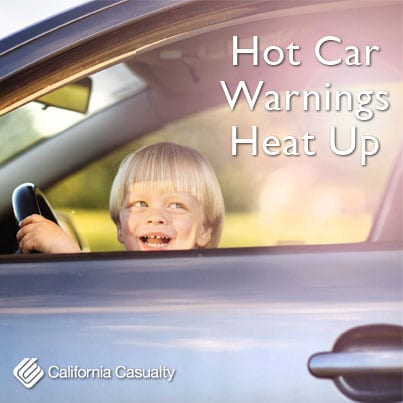
As summer weather heats up, it’s time to think about child safety and cars. While many think it could never happen to their family, since 1998 more than 630 children have died from being left in a hot vehicle, 30 of those in 2014.
How could someone leave a child in a car in when the weather turns warm? Often, it’s a parent out of their normal routine tasked with taking a child to daycare or someone in a rush who forgot a sleeping infant in the back seat.
A National Highway Traffic Safety Administration (NHTSA) study concluded that nearly half of the infants and children who died from being left in a vehicle were forgotten by their parent or caretaker. In another study, 25 percent of mothers interviewed admitted to leaving infants and toddlers in motor vehicles, and only one-third of those would leave windows half or fully opened. In other instances, young children have climbed into unlocked cars and were unable to get out as the sun turned them into ovens.
Here’s the danger – research shows that cars parked in direct sunlight, even when outside temperatures are in the 60s, can heat up to over 110 degrees. On an 80 degree day the heat can surpass 130 degrees. That would mean a child left inside could reach life-threatening levels in just ten minutes. This video dramatization shows how a simple shopping trip might turn into a disaster on a sunny day.
The peril of overheated vehicles also applies to our pets. Animal experts say 15 minutes in a car on a summer day can be deadly, even if the windows are rolled down. It’s feared that hundreds of pets die or suffer permanent damage each year from overheating in a vehicle.
The NHTSA has a checklist for parents and caregivers to prevent heatstroke tragedies:
- Never leave a child or pet unattended in a vehicle – even if the windows are partially open
- Always check back seats before locking or walking away
- Use reminders that a child is in a vehicle: place a purse or briefcase in the back seat, write a note or put a stuffed toy in the passenger seat or in the drivers view to indicate a child is in the car seatHot
- Ask the childcare provider to call if the child doesn’t show up as expected
- Teach children that vehicles are not places to play and store keys out of their reach
If you see children or pets left in a vehicle:
- Call 9-1-1 immediately
- Don’t wait more than a few minutes for the driver to return
- If the child is unresponsive or listless get them out of the car and spray them with cool water
- Stay with the child until the driver returns or medical help arrives
California Casualty urges all parents and caregivers to join the “Where’s Baby – Look Before You Lock” campaign. You can find a link to other safety information including Safe Kids USA at our resource page, www.calcas.com/resources.
Sources for this article:
https://www.safercar.gov/parents/InandAroundtheCar/heatstroke.htm
https://noheatstroke.org/
https://mydogiscool.com/newsroom/learn-more/
https://www.peta.org/issues/companion-animal-issues/cruel-practices/dog-hot-car/
https://pediatrics.about.com/od/safety/a/05_hot_cars.htm
https://www.youtube.com/watch?v=XNDWN8KDVSM
by California Casualty | Auto Insurance Info |
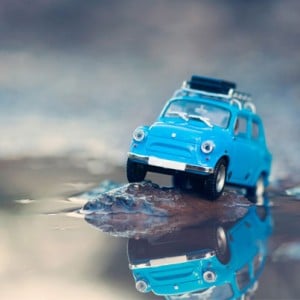
It’s time to purchase a vehicle. You’ve saved money, researched the safest ones, and now you’re ready. New would be great, but many of us are choosing to save money and buy a previously owned vehicle. You know you need to be careful and have the car checked out, but did you do an inspection for flood damage?
Attorneys general in numerous states are warning consumers to be aware of the “flood” of water damaged cars after large storms and hurricanes. In fact, a used car dealer in New Jersey was recently sentenced to prison for selling vehicles damaged in Superstorm Sandy. The scheme involved a Motor Vehicles Commission employee who doctored titles for eight flood affected vehicles. To complicate the crime, consumer-watch groups warn that flood damaged cars are often sold in states far from where the damage occurred.
Buying a car that was submerged means real problems that can haunt you for years. Water is the enemy to just about everything in an automobile – destroying electronics, fouling fuel lines, rusting engines, brakes and transmissions, not to mention promoting dangerous mold and mildew.
So how can you protect yourself against buying a water logged vehicle? Some obvious ways are to use your nose to detect musty odors or the heavy lingering aroma of cleaners and disinfectants used to mask mold odors. You should also order a vehicle history report from a government data base like the National Motor Vehicle Title Information Service, or one of the reputable private company like CarFax or Autocheck, and look for signs of water damage or dirt in the dashboard, carpets or trunk.
Other signs of water damage are:
- Rusty door hinges and trunk latches
- Silt or mud under seats, in glove compartments or windows
- Brittle and bent wiring under the dashboard
- Electronics that flicker or don’t work
- Fog or moisture beads in interior lights
If you suspect you unknowingly bought a water damaged vehicle, contact your state attorney general’s office for help. The Federal Trade Commission also has a wealth of resources for used car buyers who fear they are victims of fraud.
Sources for this article:
https://www.insurancejournal.com/news/east/2014/12/08/349278.htm
https://www.consumer.ftc.gov/blog/steering-clear-storm-damaged-car-sequel
https://www.naag.org/
https://www.vehiclehistory.gov/
by California Casualty | Auto Insurance Info |
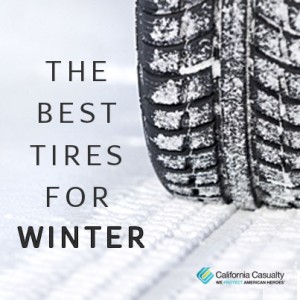
The changing of the seasons is nice; the heat is replaced by crisp, cool air, we can dig out our favorite sweaters and hoodies and most of us can stop mowing the lawn. However, there is one part of the upcoming winter that I’m dreading – that first storm of the year that starts warm but chills down so quickly it turns sleet and melted snow into a glaze of ice. Traffic will be snarled as drivers with worn tires try to navigate around town. We’ll know the ones who haven’t checked their tire tread; they’ll end up slipping and sliding, causing accidents and clogging major thoroughfares. It happens every year, and if you’ve never seen it yourself check out this video (be aware it does contain some adult language).
And that’s in Colorado, where people should know about having the right tires for winter conditions.
Before you lose your grip this winter, make it a point to have your tires checked. They are the essential piece that keeps your vehicle on road surfaces, protecting you and your children, even when streets become slick with snow and ice.
How do you know which tires will give you the best grip and control when temperatures plunge and roadways freeze? Consumersearch.com analyzed owner reviews and expert tire tests from around the world to come up with its four best snow tire picks for 2015:
- Bridgestone Bizzak WS80 (best winter tire)
- Nokian Hakkapeliitta 8 (best studded snow tire)
- Michelin Pilot Alpin PA4 (best winter performance tire)
- Michelin Latitude X-IceXi2 (best winter tire for SUVs and trucks)
Consumer reports also rated numerous all-season tires for best winter performance and recommends:
- Michelin Defender (all-season)
- Continental PureContact (performance all-season)
- Michelin Ice X13 (winter)
Treading Lightly
Many of us wonder if the tires on our vehicles have enough rubber for treacherous conditions. One determiner is the penny test. Car experts say using simple coins can determine how much tread is left on your tires.
Take It Easy
The Weather Channel says no matter what type of vehicle you drive or the tires you choose, staying off roads in severe winter conditions is your best bet. If you must travel, they offer these safety tips:
- Decrease speeds and leave plenty of room to stop
- Brake gently to avoid skids
- Turn on lights and keep lights and windshields clear and clean
- Use low gears to keep traction
- Be especially careful on bridges, overpasses and infrequently traveled roads that are likely to ice up quickly
- Keep an emergency kit in your vehicle
Let’s face it, even in the best weather conditions accidents happen. Don’t be skating on thin ice when it comes to insurance – make sure your auto insurance policy offers the best protection at the best value. Call a California Casualty advisor today for a free, no hassle policy review and comparison at 1.800.800.9410; the savings could warm your heart and pocketbook.
Sources for this article:
https://www.youtube.com/watch?v=AX_KyLuhdDQ
https://www.consumersearch.com/snow-tires
https://www.consumerreports.org/cro/tires/best-and-worst-tires-in-all-weather-conditions
https://maps.weather.com/activities/driving/drivingsafety/drivingsafetytips/snow.html
https://www.pennytest.com/
https://www.ready.gov/car
https://www.fema.gov/media-library-data/1408633655071-32caae446efef4ab2f4fcccdb55f725c/PrepareAthon_WINTER%20STORMS_HTG_FINAL_508.pdf
by California Casualty | Auto Insurance Info, Homeowners Insurance Info |
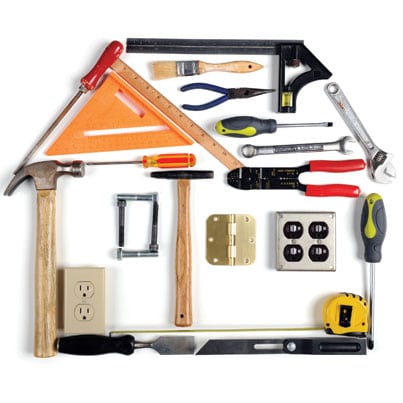
From pulling weeds to cleaning floors, it seems that work around the house never ends, but it’s a lot easier to tackle before winter storms and cold weather move in. As we enjoy the last few months of summer, now is a good time to do maintenance that will prevent damage, prepare your home for winter, and add lasting value.
These mid-summer home maintenance tips are courtesy of MSN Real Estate:
- Do an energy audit and start fixing insulation and cracks
- Insulate hot water pipes
- Clean patio furniture
- Scrub your concrete
- Patch concrete and asphalt cracks
- Prune or remove problem trees and shrubs
- Clean exhaust fans
- Fix the fence
- Make your landscaping “critter proof”(deer, rabbits and other animals can cause thousands of dollars of damage to your plants and trees)
Doing regular maintenance can not only protect your home, but it can enhance the value of your largest investment. Most realtors and home repair experts say simple projects can add thousands of dollars to your home’s worth. Wikihow.com is a great resource with tips that give the best payback:
- Clean and reduce the clutter around your home
- Spruce up your yard
- Repaint the interior and exterior
- Upgrade your lighting and light switches
- Add wood trim
Don’t forget another vital piece to preserving your home and all the things that come with it; insurance. Now is the time to get a home insurance update and policy comparison to make sure your precious items are fully covered at the best value. Have you made improvements that could land you big discounts? Don’t forget that bundling your auto and home can offer big savings. Call a California Casualty advisor today for a no hassle policy review at 1.800.800.9410.
Sources for this article.
by California Casualty | Auto Insurance Info |
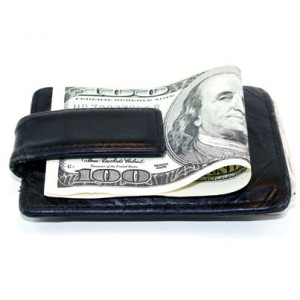
Time is a precious commodity for most of us. We are busy working, getting children to appointments and events and trying to maintain a home life. Since time is short, you should get the best value for it, and a new survey by Insurance.com finds shopping for auto insurance gives the best time-per-dollar payback of goods or services available.
Insurance.com talked to to 2,000 women and men under age 25 who said auto insurance had the best payback with an average of $540 for ten minutes of effort, or $54 per minute.
Cellphone plans were second with an average annual savings of $179 for 97 minutes of shopping, a per-minute savings of $1.86.
Cable or Satellite TV netted a savings of $1.72 per minute followed by new car shopping at $1.29 per minute.
So how do you pick who should insure you? Ehow.com offers these pointers on choosing an insurance company:
- Determine how much coverage you really need. A new vehicle with a bank loan may be required to carry full coverage but a rebuilt beater may not.
- Know your driving record. It will affect your premiums.
- Evaluate insurance companies using the BBB and rating services like JD Powers A.M. Best for reliability.
- Call body shops and ask how the company is to work with after a claim.
California Casualty sets a high standard for auto insurance companies with a 99 percent customer service rating and a claims satisfaction of 96 percent. California Casualty also provides the best value with exclusive benefits to group members and associations that are not available to the general public: professional discounts and highly competitive rates, flexible payment plans including EZ Pay and summer and holiday skips and reduced or zero deductibles for vandalism and collision that happen to your vehicle at the place where your work.
For maximum savings and satisfaction, call a California Casualty advisor today for a policy review and comparison at 1.800.800.9410.
Sources for this article:
https://www.insurance.com/about-us/news-and-events/2014/07/whats-comparison-shopping-worth-insurance.com-survey-finds-savings-per-minute.html
https://www.ehow.com/how_4480121_choose-car-insurance-coverage.html






